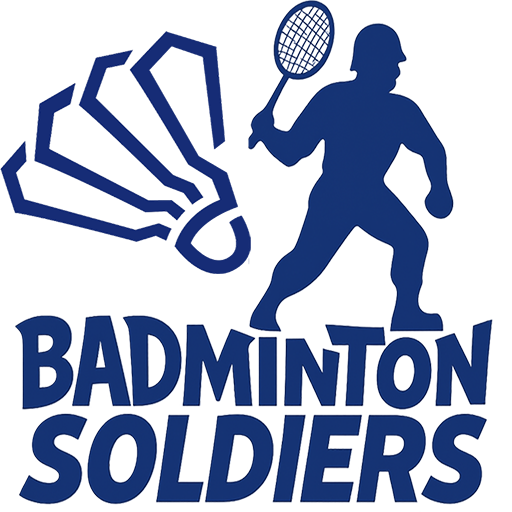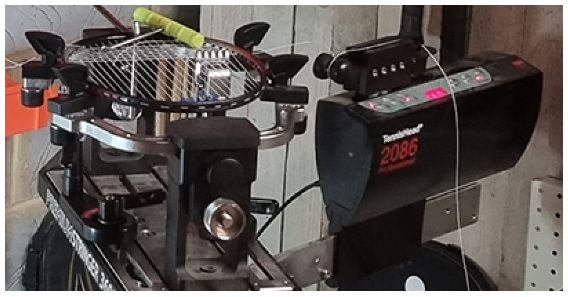Professional Badminton Racket Restringing for Clubs Across West London
As a professional badminton racket stringer, specialising in club-level services across West London, I’ve had the privilege of working with a diverse array of players, each with their unique playing styles, preferences, and requirements. Restringing a badminton racket is a delicate blend of art and science, requiring an in-depth understanding of the player’s needs, the racket’s design, and the characteristics of the string. In this article, I’ll delve into the intricate world of badminton racket restringing for clubs and how it can dramatically enhance a player’s performance and elevate the club experience.
Why Professional Restringing is Essential for Clubs
The role of a professional stringer in a club setting is often underestimated, yet the tension, type, and pattern of a racket’s strings can significantly impact power, control, and feel. A well-strung racket can boost a player’s performance, while a poorly strung racket can hinder their game.
Understanding Club Players’ Needs
Club players come in all skill levels and playing styles. Some may prefer high-tension stringing for better control, while others may opt for lower tension to generate more power. It’s crucial to have a detailed conversation with the player about their playing style, preferences, and any challenges they’ve faced with their current setup to provide the optimal restringing service.
Selecting the Right String for Your Style
Choosing the right string is as important as selecting the proper tension. Here’s a quick guide:
- Thinner Strings: More power and feel, but less durable. Ideal for advanced players who can generate their own power.
- Thicker Strings: More control and durability, making them perfect for beginners or defensive players.
Each player’s string selection should align with their playing style and personal preferences.
The Art and Precision of Club-Level Stringing
Stringing a badminton racket for club players is a precise task that requires patience and an understanding of the player’s needs. The process can take anywhere from 30 minutes to an hour, depending on the string pattern’s complexity and the stringer’s expertise. Ensuring even tension throughout is critical to avoid weak spots that can affect performance.
The Impact of Professional Restringing on Performance
A properly strung racket can significantly improve a player’s game. For example:
- Aggressive Players: High-tension, thinner strings provide more power for attacking shots.
- Defensive Players: Low-tension, thicker strings offer better control for defensive plays and drop shots.
How Much Does It Cost to Restring Your Badminton Racket?
- BG 65 Titanium – £16
- BG 80 Power – £18
- Exbolt 63 – £18 (currently out of stock)
- Exbolt 65 – £18
- 66 Ultimax – £18
If you provide your own strings, we charge £10 for restringing services.
Recommended Tensions for Different Skill Levels
- Beginners: 20lbs – 22lbs
- Intermediate Players: 22lbs – 24lbs
- Advanced Players: 25lbs and up
Book Your Racket Restringing Service Today!
Don’t let your strings hold you back! Contact David today to schedule your professional badminton racket restringing. Call 07 452 853 545 or visit us at 71 Hodder drive UB6 8LL
How much does it cost to restring, string services for badminton rackets:
Tension Recommendation:
Beginners: 20lbs – 22lbs.
Intermediate player: 22lbs. – 24 lbs.
Advanced Player: 25lbs and up.
How much do we charge?
PRICE:
Strings BG 65 Titanium …… £16
Strings BG 80 POWER. ……£18
Strings BG 80 …….……£18
Strings Exbolt 63 ……..£18 out of stock
Strings Exbolt 65 ……..£18
Strings 66 Ultimax ……£18
If you provide your own strings the cost to repair your badminton racket is £10.
Badminton racket restringing west london
Badminton rackets are essential equipment for any player, and over time they may sustain damage due to intense gameplay or accidental mishaps. Instead of discarding a broken racket, repairing it can often be a more economical and rewarding option. This guide will walk you through common racket issues and how to fix them.
Common Types of Badminton Racket Damage
- Broken Strings: One of the most frequent problems players face is broken strings. This can happen due to powerful smashes or wear and tear over time.
- Cracked Frame: The frame of the racket can crack if it hits the floor or another racket during play. Cracks can weaken the structure and affect the racket’s performance.
- Loose Grip: The grip can become worn or loose over time, making it difficult to maintain control of the racket during a match.
How to Repair a Badminton Racket
- Replacing Broken Strings:
- To replace broken strings, you will need a stringing machine or access to a professional stringer.
- Remove the old strings carefully, ensuring you do not damage the frame.
- Use a suitable string tension depending on your playing style. Beginners might prefer lower tension for more power, while advanced players may opt for higher tension for better control.
- Fixing a Cracked Frame:
- Minor cracks can sometimes be repaired using an epoxy resin. Apply the resin to the crack and let it cure for at least 24 hours.
- For more severe cracks, consider reinforcing the frame with carbon fibre strips. However, if the damage is too extensive, it might be better to replace the racket.
- Replacing or Regripping the Handle:
- Remove the old grip by unwrapping it from the handle.
- Choose a new grip that suits your preference—some players prefer thicker grips for better cushioning, while others like thinner grips for more control.
- Wrap the new grip tightly around the handle, starting from the base and working your way up.
Tips for Maintaining Your Badminton Racket
- Avoid String Over-Tensioning*: Using string tension higher than recommended can lead to frame damage.*
- Store Properly*: Keep your racket in a protective cover when not in use to avoid accidental damage.*
- Check Regularly*: Ins*pect your racket regularly for signs of wear and tear so you can address issues before they worsen.
When to Seek Professional Help
If you are unsure about repairing your racket yourself, it is always best to consult a professional. They have the tools and expertise needed to properly assess and fix any damage, ensuring your racket is in optimal condition.

